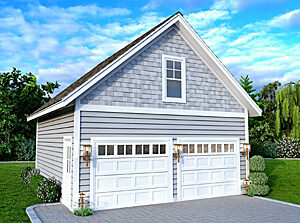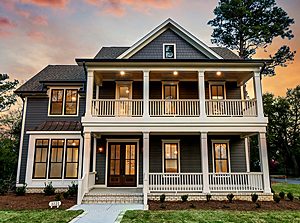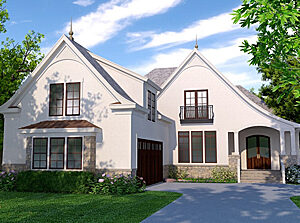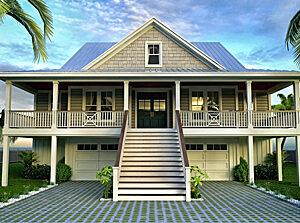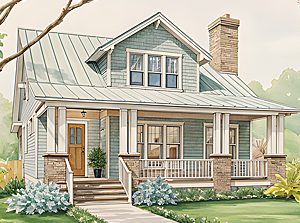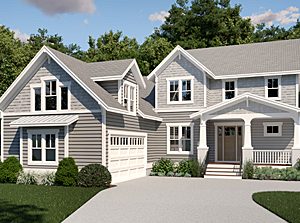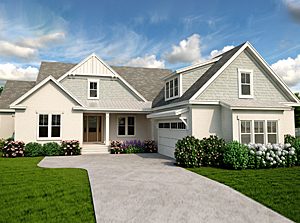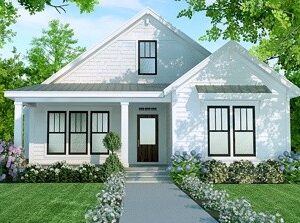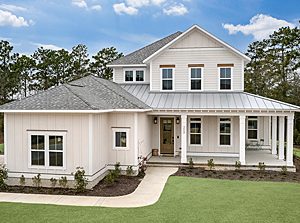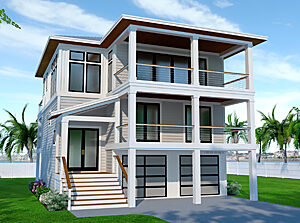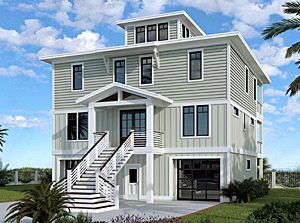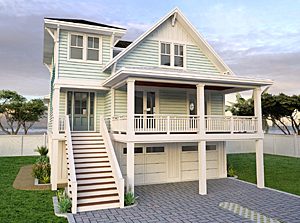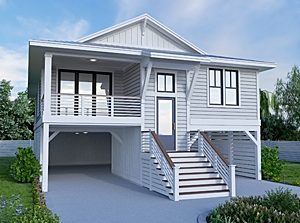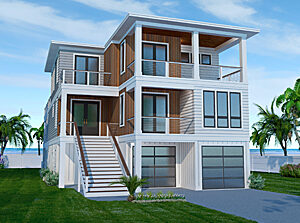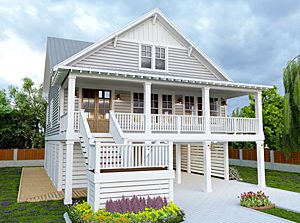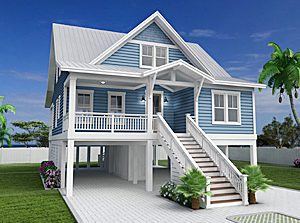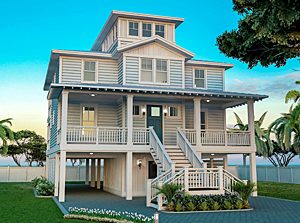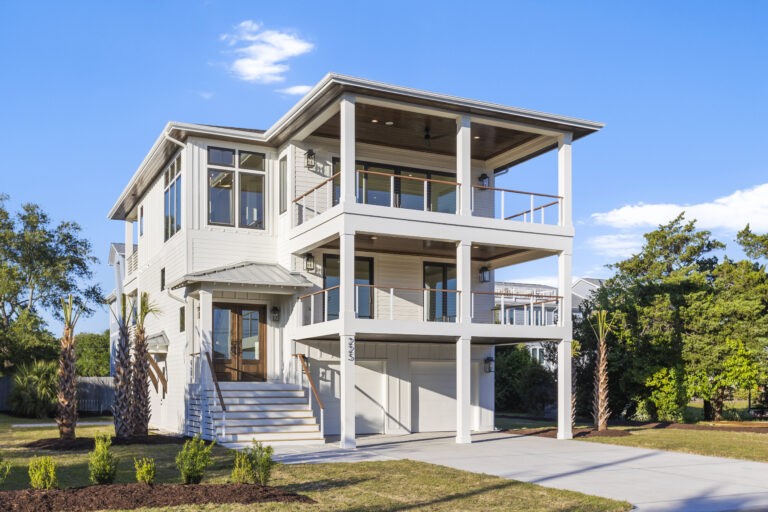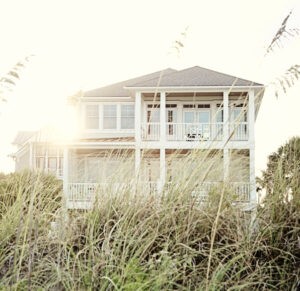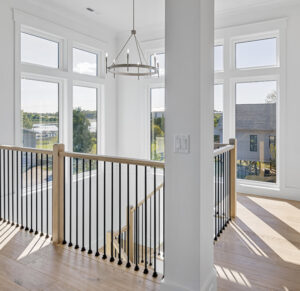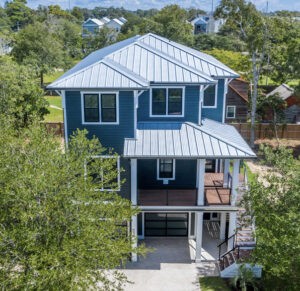Choosing the best building materials for a beachfront home is essential to constructing a durable and long lasting coastal property. With harsh elements such as high winds, salt water, and humidity, selecting suitable materials is crucial.
But what weather-resistant materials are ideal for exterior use in coastal environments? By understanding your material options for a beachfront home, you can create a stunning waterfront retreat that resists damage from the elements while providing enjoyable living space year-round.
We have everything you need to know when looking for robust yet elegant materials for your waterfront property, so keep reading!
Weather-Resistant Exterior Materials
Coastal homes are exposed to harsh weather conditions, making it essential to choose materials that can withstand strong winds and the debris they can carry. Fiberglass and non-cellular PVC plastic are both durable options for exterior use, providing long-lasting protection against the elements.
Fiberglass as a Wind-Resistant Material
Fiberglass is a popular material in beach houses and offers excellent resistance to high winds due to its strength and flexibility. In addition, its lightness makes it simpler to install and maintain than many other building materials.
Non-Cellular PVC Plastic for Durability
Non-cellular PVC plastic, another common choice for coastal property exteriors, is resistant to moisture, rotting, and insect damage. As a result, it ensures your home’s exterior remains intact even when facing harsh elements.
Impact-Rated Glass Windows and Doors
Living in a coastal area means your beach house must be equipped to handle severe winds. One way to ensure this is by installing laminated glass windows, which offer increased stability and protection against strong winds because they consist of multiple laminated layers for enhanced impact resistance. Additionally, double-glazed impact-rated glass windows and doors can provide an extra layer of security in regions prone to hurricanes.
Benefits of Laminated Glass Windows
- Durable and wind-resistant
- Better insulation compared to single-pane windows
- Impact resistance for wind-thrown debris
Importance of Double-Glazed Windows
- Enhanced security against high winds
- Noise reduction from outside sources
- Increased energy efficiency and indoor comfort due to improved insulation
Foundation Considerations for Beach Homes
For beachfront homes, a strong foundation is essential to resist damage from erosion and flooding. A deep foundation helps ensure your coastal property remains stable even during extreme weather events and reduces the risk of structural damage from shifting sands.
You can also add a pier or several piers, which provide extra stability and are often required by local building codes, making them an essential part of the design process when constructing a waterfront home.
Piers made from pressure-treated lumber or concrete are popular as foundation elements due to their ability to resist erosion caused by waves and tidal fluctuations. In addition, these materials provide necessary support while allowing water to flow beneath structures during storm surges.
Flooring Options Suitable for Coastal Living
Selecting the appropriate flooring for your shoreline home is essential. It must be resistant to changing humidity levels and simple to clean because of the water and sand that often get tracked into beach homes. Two popular options include engineered hardwood flooring and tile.
Engineered Hardwood Benefits
- Durable against wear and tear from high foot traffic
- Elegant appearance that complements coastal design styles
- High resistance to warping
Tile as an Affordable Alternative
- Versatile design possibilities for all interior spaces
- Extremely durable
- Will not warp with changing humidity levels
Siding Material Selection
When choosing siding materials for your beach house, it’s essential to consider appearance, maintenance requirements, and durability. So what are your options?
Stucco Siding
Stucco, a type of siding made out of cement, works well in coastal areas because it is resistant to moisture damage. When properly maintained, stucco can provide a long-lasting and attractive home exterior.
Fiber Cement Siding
Fiber cement siding is very popular because it combines fiber and cement to offer the durability of cement with the appearance of beautiful wood siding. Fiber cement is low-maintenance and provides enhanced protection against the elements.
Wood Siding
If you prefer a rustic charm for your coastal property, wood siding delivers. Although wood siding requires more maintenance than other types of siding, some people find its appearance and unique character well worth it.
Roofing Materials for Coastal Homes
When it comes to building materials for beach houses, durability and weather resistance are essential. This is especially true for the roof of a coastal home. Two popular options for roofing materials include metal roofing and clay tile roofs.
Metal Roofing
Metal roofing is renowned for its strength and resistance to the elements, such as high winds. It is also a popular choice for its sleek and modern look. When properly maintained, metal roofing can provide decades of protection for your beachfront home.
Clay Tile Roofing
Clay tile roofs are gorgeous and can last for decades. They are also durable, making them an excellent choice for coastal properties that require strong protection against extreme weather conditions. Clay tile, like metal roofing, comes in a variety of styles and colors to choose from.
Exterior Living Spaces
No waterfront property is complete without beautiful exterior living spaces that allow you and your family and friends to enjoy the sound of waves, sea breezes, and gorgeous views. Here are a few things to consider when choosing the best materials for your beach home’s exterior living spaces.
Outdoor Entertaining Areas
Composite decking, which is a combination of wood and plastic, is a popular material for decks and patios because it can withstand strong winds and salt air. An outdoor kitchen is also a great addition to any beach house, providing a space to cook and entertain guests, and it can be built using durable stone for a long-lasting and elegant space.
Exterior Trim and Fascia
When designing a beach house, it’s essential to consider the home’s exterior trim elements. These areas are especially important, as they prevent water infiltration and damage to your home’s roof and siding. Non-wood materials like PVC and fiber cement are popular choices for their durability and resistance to moisture and salt air. It’s also important to consider building codes and regulations for coastal areas when selecting materials for the home’s exterior.
Wraparound Porches
A wraparound porch is a classic feature of beach houses, providing a space to relax and enjoy views from all angles. When designing a wraparound porch, it’s important to choose materials that can withstand harsh coastal conditions. Fiberglass and non-cellular PVC plastic are popular choices for porch railings and columns.
Building a Beachfront Home?
By choosing durable materials that can withstand harsh coastal conditions, you can ensure that your beach house will last for years to come.
Are you looking for the best building materials for a beachfront home? Before you get started, check out SDCHousePlans.com for our collection of Coastal House Plans designed specifically for these types of environments.



